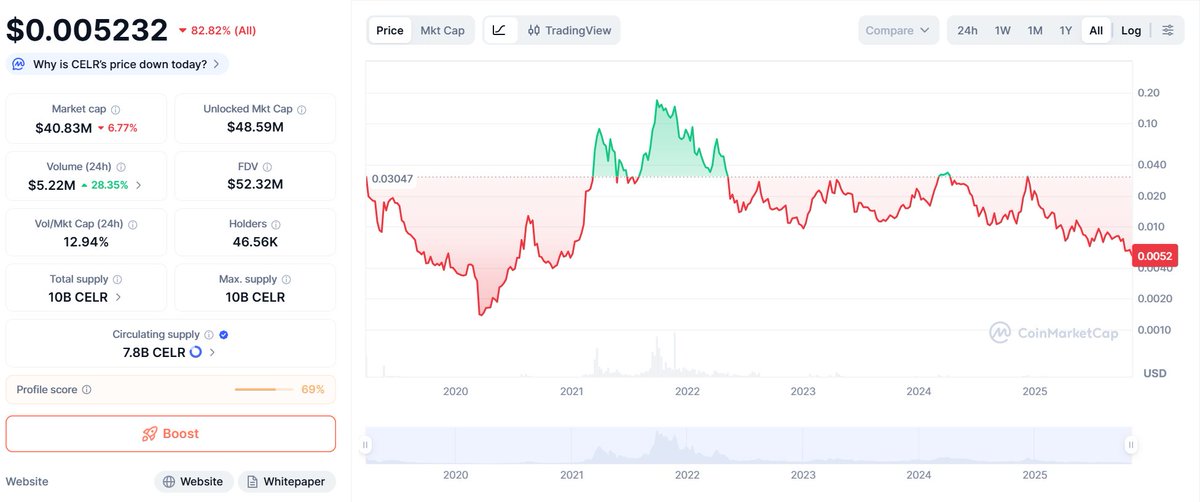Prediction Post: What will the price trend of @brevis_zk be after its TGE in the future?
To answer this question, I believe the best approach is to review the complete cycle performance of the Brevis team's previous project, $CELR.
I will analyze from two aspects: the history of $CELR listings and the price trend of $CELR.
1/ History of $CELR Listings
The peaks of $CELR listings concentrated in three time periods:
▌2019: Listed on Binance and Gate after IEO
▌2021: Gradually listed on OKX, Bithumb, Bitget, Bybit
▌2022–2025: Slightly supplemented with new trading pairs and derivatives
The key finding: The historical highest point of $CELR price appeared at the end of September 2021, which is two years after the TGE.
What is the logic behind this?
The team is not eager to pursue "listing equals peak" short-term speculation but focuses on product iteration and ecosystem building. Each major product release is accompanied by new exchange listings, with the dual catalysts of "product milestones + liquidity expansion" driving the price increase.
Given the previous success of $CELR, it is reasonable to speculate that Brevis will list on more exchanges during its future TGE. Additionally, considering that Brevis has received investment from YZi Labs, the probability of launching on Binance is quite high.
2/ Price Trend of $CELR
Since its launch in 2019, $CELR has experienced several significant multi-month uptrends, with the maximum increase reaching 3580% (during the 2021 bull market).
Each round of increase is almost synchronized with product/network milestones:
▌March 2019: IEO + Binance launch, single-day increase over 300%
▌March-August 2020: DeFi boom + cBridge β launch, rising from $0.0014 to $0.012
▌January-October 2021: Main bull market + cBridge v1.0 & SGN launch, surging from $0.005 to a historical high of $0.17
▌November-December 2024: Post-election sentiment + L2 concept speculation
After each round of increase, there is generally a deep retracement, reflecting two characteristics:
First, on-chain data is a leading indicator. Before each surge, trading volume, bridging frequency, and staking inflow are all amplified in advance.
Second, severe surges and subsequent retracements are common 1–3 weeks after milestone announcements. This is a classic pattern of "expectation fulfillment."
For Brevis, the monitorable leading indicators include: zk proof count and number of partnership agreements. Airdrops, public testing, and mainnet launches are all potential high-volatility windows.
From a technical perspective, Brevis is a true ZK infrastructure, not just a simple cross-chain bridge. It has already served leading protocols such as PancakeSwap, MetaMask, Linea, and Uniswap, generating over 140 million ZK proofs. The technical moat is deeper.
In summary: The Brevis team is one of the few projects in the crypto space that possesses "strong capabilities + long-term construction mindset + good VC and exchange relationships."
Referring to the historical performance of $CELR, Brevis may not reach its peak immediately after the TGE, but with product iteration and ecosystem expansion, it is expected to usher in true value discovery in the medium to long term (6-24 months).

Disclaimer: This article represents only the personal views of the author and does not represent the position and views of this platform. This article is for information sharing only and does not constitute any investment advice to anyone. Any disputes between users and authors are unrelated to this platform. If the articles or images on the webpage involve infringement, please provide relevant proof of rights and identity documents and send an email to support@aicoin.com. The relevant staff of this platform will conduct an investigation.